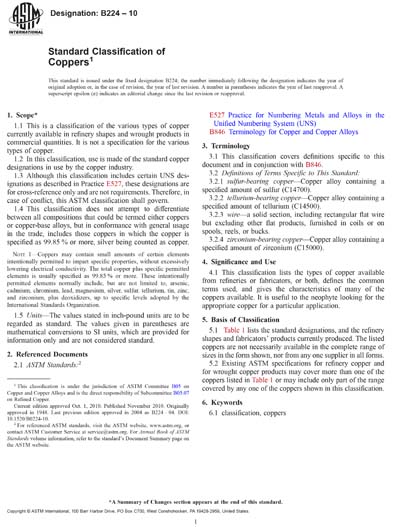Historical
ASTM B224-10
Standard Classification of Coppers
1.1 This is a classification of the various types of copper currently available in refinery shapes and wrought products in commercial quantities. It is not a specification for the various types of copper.
1.2 In this classification, use is made of the standard copper designations in use by the copper industry.
1.3 Although this classification includes certain UNS designations as described in Practice E527, these designations are for cross-reference only and are not requirements. Therefore, in case of conflict, this ASTM classification shall govern.
1.4 This classification does not attempt to differentiate between all compositions that could be termed either coppers or copper-base alloys, but in conformance with general usage in the trade, includes those coppers in which the copper is specified as 99.85 % or more, silver being counted as copper.
Note 1—Coppers may contain small amounts of certain elements intentionally permitted to impart specific properties, without excessively lowering electrical conductivity. The total copper plus specific permitted elements is usually specified as 99.85 % or more. These intentionally permitted elements normally include, but are not limited to, arsenic, cadmium, chromium, lead, magnesium, silver, sulfur, tellurium, tin, zinc, and zirconium, plus deoxidizers, up to specific levels adopted by the International Standards Organization.
1.5 Units—The values stated in inch-pound units are to be regarded as standard. The values given in parentheses are mathematical conversions to SI units, which are provided for information only and are not considered standard.
ASTM International [astm]

